What is Your Tongue Telling You?
You might not know this but your tongue has the amazing ability to tell you—ok maybe more like show—what’s going on in your body, in particular your organs. Ayurveda suggests that the tongue surface reflects the entire map of your body. The mouth and tongue are at the start of the very long (30’ or so) digestive tract. As it is so long and convoluted you can’t easily view it without some invasive procedures — so taking a quick peek at the tongue is pretty handy.
But what are we looking for exactly?
There are a couple of factors here—besides just the overall look of the tongue (color, texture, coatings, etc.) there’s also what’s known as the organ map. We’ll investigate that in a moment, but let’s start with the so-called “perfect” tongue. Here’s a checklist1
- Pink – not pale, scarlet or red
- The pinkish color would be consistent across the entire tongue
- You would be able to see small cylindrical taste buds on the entire top surface of the tongue
- It would be not too wet and not too dry, it would be just right—moist
- You would not see any cracks on the tongue
- There would be a very thin white coating of mucus on the tongue
- There would be no teeth marks or glassiness on the sides of the tongue.
If your tongue is not these things, don’t despair. You can always go to a natural practitioner for some advice or even just hop onto good ol’ Google for insights. This online site has quite a lot of information: John Douillard’s Life Spa / DIY Ayurvedic Tongue Diagnosis. There’s some great detail about the different imbalances, what they might mean and even some support/herbs that might help. Once you know what’s going on you can take steps to remedy the issues.
What’s this about an Organ Map?
 Nope, we didn’t forget about that. The health status of your organs—an “organ map”—can be drawn on your tongue. It seems that quite a lot of folks know about this—tongue diagnosis is an ancient art and lucky for us it’s all been documented.
Nope, we didn’t forget about that. The health status of your organs—an “organ map”—can be drawn on your tongue. It seems that quite a lot of folks know about this—tongue diagnosis is an ancient art and lucky for us it’s all been documented.
Again, it might be helpful to see a natural practitioner for a full diagnosis, but you can have a look at the map and see how it corresponds with your own tongue. While looking in the mirror, examine each area on the tongue and look for differences in color, texture, coating and taste buds.
Caring for Your Tongue
Last, but certainly not least, is caring for your tongue. It really is a special organ—and muscle—that does better with some care and attention. Besides daily use such as exercising it while talking and eating, cleaning the tongue is highly recommended, is super easy and takes less than a minute. We can all spare 10 or 20 seconds a day in our morning and evening routine, right? All you have to do is, a) use the appropriate tool, and b) scrape/clean your tongue. It’s that easy! If you’re not used to it, it may be a little strange at first, but once you start you’ll have some “aha” moments that will keep you doing it forever. Forget the detail about what gunk may come off your tongue, but suffice it to say that you’d rather see the ‘bio-burden’ rinsed down the drain than swallowed. And here’s the good stuff—you’ll most likely notice food tastes better, your breath will be ‘sweeter’ and you’ll probably be sick less often. Why? Scraping your tongue removes undesirable bacteria in the mouth, such as mutans streptococci2 and reduces volatile sulfur compounds (that’s the part that’s linked to bad breath). Convinced (or at least curious)? Here are some guidelines from John Douilard again3:
- In the morning, right after you wake up, scrape your tongue. Make it the first thing you do. Scraping your tongue followed by a glass of water can reduce accumulating digestive ama (toxins) that have built up overnight.
- With a relaxed tongue, using your U-shaped (metal, not plastic) tongue scraper, gently reach to the back of the tongue and scrape the tongue from back to front. Repeat this 5-10 times reaching as far back as comfortable, rinsing the scraper after each pass.
- Follow tongue scraping with brushing, flossing and large glass of water.
- To complete an Ayurvedic oral hygiene routine, this can be followed by oil pulling.
- Get into the habit of scraping your tongue prior to each brushing.
DrTung’s started out many years ago with our best-selling tongue scraper, and now we have many other all-natural products to get you going. Look for our Ionic Toothbrush, Smart Floss® (or our new Activated Charcoal Floss), and DrTung’s Oil Pulling Concentrate with 24 botanicals in an organic sesame oil base (read more at Oil Pulling 101).
You can find these products on our website, at your local natural food store (check our website for locations near you) as well as many other 3rd party online sellers.

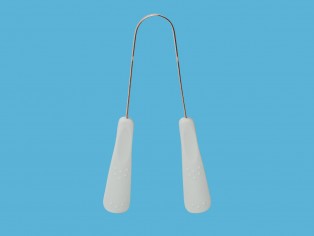
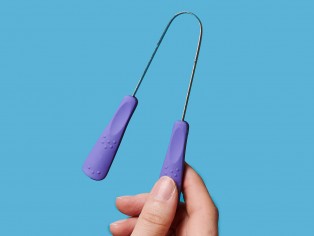
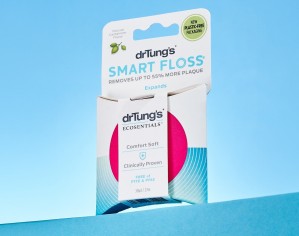
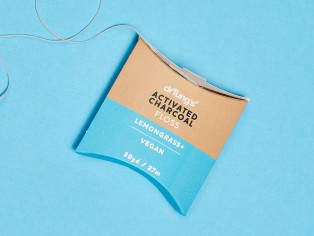
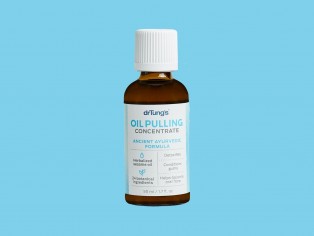

By Vicki Toews 02/3/2020 11:24:09
We do not recommend brushing again after using DrTung's Oil Pulling Concentrate so that you are not brushing away the herbalized oil from your gums, nor adding any other ingredients from toothpaste onto your gums (i.e. let the effects of oil pulling stay longer).
By Sophia 01/30/2020 20:06:29
After Oil pulling, do you have to brush your teeth again?